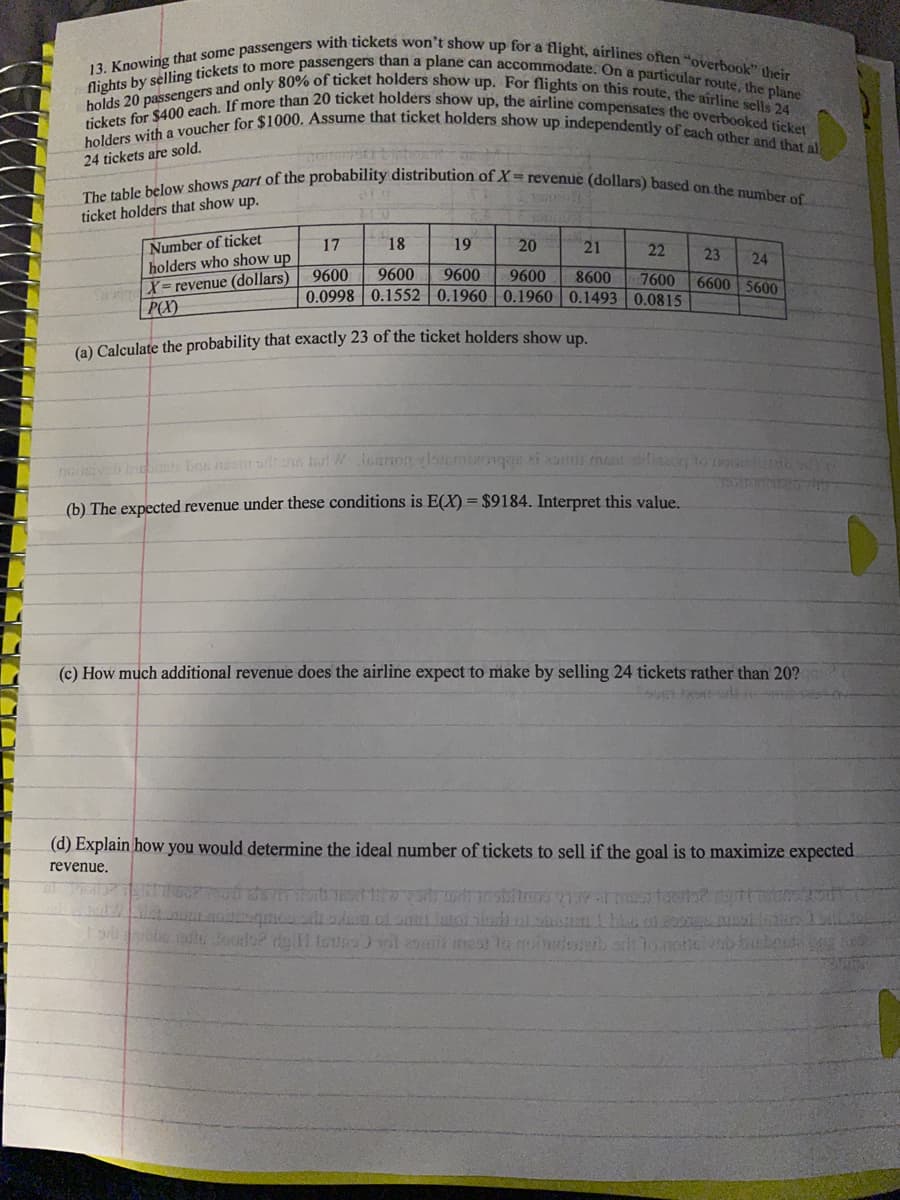13. Knowing that some passengers with tickets won't show up for a flight, airlines often "overbook" their flights by selling tickets to more passengers than a plane can accommodate. On a particular route, the plane holds 20 passengers and only 80% of ticket holders show up. For flights on this route, the airline sells 24 tickets for $400 each. If more than 20 ticket holders show up, the airline compensates the overbooked tícket holders with a voucher for $1000. Assume that ticket holders show up independently of each other and that al 24 tickets are sold. t of the probability distribution of X= revenue (dol
Percentage
A percentage is a number indicated as a fraction of 100. It is a dimensionless number often expressed using the symbol %.
Algebraic Expressions
In mathematics, an algebraic expression consists of constant(s), variable(s), and mathematical operators. It is made up of terms.
Numbers
Numbers are some measures used for counting. They can be compared one with another to know its position in the number line and determine which one is greater or lesser than the other.
Subtraction
Before we begin to understand the subtraction of algebraic expressions, we need to list out a few things that form the basis of algebra.
Addition
Before we begin to understand the addition of algebraic expressions, we need to list out a few things that form the basis of algebra.

Trending now
This is a popular solution!
Step by step
Solved in 3 steps with 4 images




